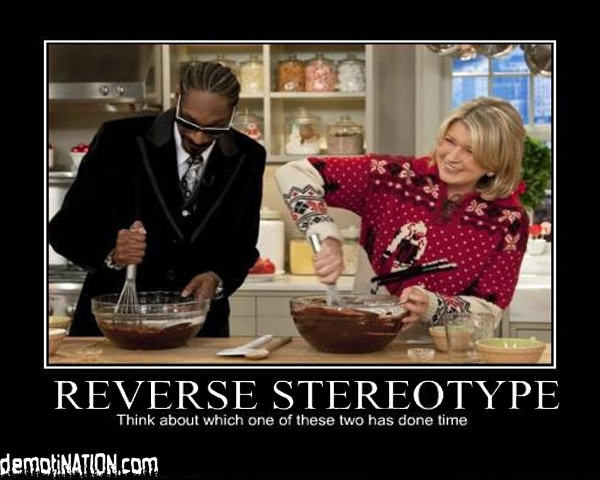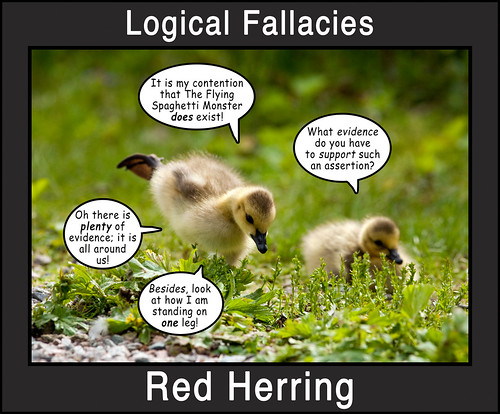Fallacy is another type of bad arguments. When someone presents a fallacious arguments, the arguments should be rejected as it is so bad and it is typically unrepairable (Eipstein, 2002)
CAUSAL FALLACIES
Because causality plays an dominant role in the way we make sense of the world, it is not surprising that we make many mistakes and errors in judgement trying to determine causal relationships.
Fallacy of False Cause or Non Sequitur :- incorrectly assumes one thing is the cause of the other. Non sequitur is Latin for "it does not follow"
Example:
Argument- I hear the rain falling outside my window; therefore the sun is not shining.
Problem- The conclusion is false because the sun might be shining while it is raining.
Post Hoc Fallacies or Post Hoc Ergo Propter Hoc ;- believing that temporal succession implies a causal relation.
Example:
Argument- It rained just before the car broke down. The rain caused the car to broke down
Problem- There maybe no connection between the two events. Two events happening one after another is not an indication of causation.
Slippery Slope Fallacies;- the pattern of this arguments is:
"We cannot allow A, because A will lead to B, and be will lead to C, and we sure do not want C!"
The argument usually implies negative effects are presented as the automatic consequences of a course of an action or belief. We commit slippery slope fallacy when we claim without sufficient evidence that a seemingly harmless action, if taken will lead to a disastrous outcome.
FALLACIES OF GENERALIZATION
A generalization is a statement that asserts that all or most things of a certain kind have a certain quality or characteristic. A generalization argument can become bad if the generalization made do not follow good generalization criteria. A good generalization argument should comprise elements such as the sample must be big, the sample is representative the population, the sample is well studied and so forth.
Fallacy of Accidents or Sweeping Generalization;- A generalization that disregards exceptions
Examples:
Argument- Cutting people is a crime. Surgeon cut people, therefore, surgeons commit a crime.
Problem- Cutting people is not a crime in certain situations.
Argument- It is illegal for a stranger to enter someone's home uninvited. Firefighters enter people's home uninvited, therefore firefighters are breaking the law.
Problem- The exception does not break nor define the rule (Since the home owner doesnt invite the firefighters, but we would want them to enter uninvited, this exception does not actually break the law)
Hasty Generalization;- argues from a special case to a general rule. Inductive logic demands a data set large enough and qualitative enough to warrant a generalization. Hasty generalization can also be called reverse accident, destroying the exception.
Two hasty generalizations for the price of one! "He's a black rapper. He's probably done time in jail." and "She's a white homemaker's diva. She probably hasn't any idea what a prison is." What you CAN deduce from the picture is "Snoop Dogg rarely--if ever--uses a wisk," and "Holy crap--these two have met?!"
Example:
Argument- Every person I've met has ten fingers, therefore all people have ten fingers.
Problem- Those who have been met are not representative subset of the entire set.
FALSE DILEMMA
This fallacy is committed when the arguer poses a fake either/or choice.
Example:
Argument- "Either you are with us, or you are with the terrorist. Either you stand by civilization and good(us), or with barbarism and evil(them).Choose.And to those nations that choose wrongly,beware..." - US President George Bush's message to the world, first delivered on September 20,2001
Problem- The arguer claim there are only two relevant choices, when in fact there are more than two.
FALLACY (IRRELEVANT CONCLUSION)
This fallacy is done when the arguer diverts the attentions away from a fact in dispute rather than addressing it directly.
Ad Hominem Fallacy;- comes from Latin words that means "at the man". It is purely personal considerations meaning the arguer purposely attack a person in attempt to get the audience to believe in his/her PREMISES. "Ad Hominem" attack usually arise from a person having an irrational attachment to their beliefs.
Ad Hominem Fallacy can be divided into 3 categories:
a)Ad Hominem (Abusive) - Attack the other person's "character" a "bad person"
b)Ad Hominem (Circumstancial) - Attacks the other person's "credibility" someone who can't be "trusted"
c)Ad Hominem (Tu Quo Que) - Making an argument that point out someone has the same fault he is accusing the speaker (or writer)of having.
Ad Hominem Abusive
Example- George argues that the taxes should be raised. But he is a communist, so taxes shouldn't be raised.
Problem- George's political affiliation doesn't pertain the truth of his claim.
Ad Hominem Circumstancial
Example:
Lizzie: The promoter of that slimming center said that nano technology services that are available in the center is the best way to trim down all fats
Marie: Of course she said that way; she defend her interest to get customers for her slimming center.
Ad Hominem Tu Quo Que
Example: You asked me to study hard but I hardly see you do your revision this trimester.
Ad Populum Fallacy;- Fallacy that appeal to popular sentiment (appeal to the majority/loyalty). People who tends to use Ad Populum Fallacy tends to persuade someone of something by manipulating emotions. By understanding or by pressing the right button (the right emotions) the persuader hopes the listener's will incline to agree with the argument.
There are a few of Ad Populum categories:
- Ad Populum appeal to force/fear = Scare tactic
- Ad Populum appeal to pity
- Ad Populum appeal to shame
- Ad Populum appeal to vanity = Apple polishing
- Ad Populum appeal to authority
- Ad Populum appeal to ignorance
- Ad Populum appeal to spite = "Two wrongs make a right"
The general structure of ad populum fallacy is:
"You should do or believe _____ or else _____"
* The second part of the blank space is the type of emotion that the arguer want to stir the listener
THE BANDWAGON FALLACY
- Ad Populum appeal to common belief
- Ad Populum appeal to common practice
- Ad Populum appeal to tradition
These three are known as the BANDWAGON FALLACY because the arguer is encouraging the listener to 'jump the bandwagon' or to 'belong to a peer group' or to 'fit in'. It is a fallacy in which a threat of rejection by one's peer (or peer pressure) is substituted for evidence in an "argument"
In order to fit in a group, someone needs to:-
a) Think like the others (Ad Populum appeal to common beliefs)
b) Do what others do (Ad Populum appeal to common practice)
c) Follows customs or traditions ( Ad Populum appeal to tradition)
The basic pattern of the argument is:
1) Everybody(or a selected group of people) believes or does X
2) therefore, you should believes or do X, too.
PETITIO PRINCIPII (AVOIDING ARGUMENT)
Sometimes, people try to persuade by means of avoiding the actual discussions, When it happens, sometimes, the premises are missing or the actual issues are side tracked by irrelevant issues.
Begging the question (Circular Argument);- demonstrates a conclusion by means of premises that assumes the conclusion.
The form of this argument is;
Example:
Argument- Aspirin users are at risk of becoming dependent on the drug, because aspirin is an addictive substance
Problem- The premise and the conclusion have the same meaning. if one have already accepted the premise, there is no need to reason to the conclusion. Obviously the premise is not logically irrelevant to the conclusion, for if the premise is true then the conclusion itself must also be true. It is however, logically irrelevant in proving the conclusion.
Red Herring Fallacy;- "an arguer tries to sidetrack his audience by raising an irrelevant issue and then claims the original issues has been settled by the irrelevant diversion - Downe, 2005"
Red Herring fallacy follows this form:
Topic A is under discussion
Topic B is introduce under the guise of being relevant to topic A (when topic B is actually not relevant to topic A)
Topic A is abandoned
This sort of "reasoning" is fallacious because merely changing the topic of discussion hardly counts as an argument against a claim.














0 comments:
Post a Comment